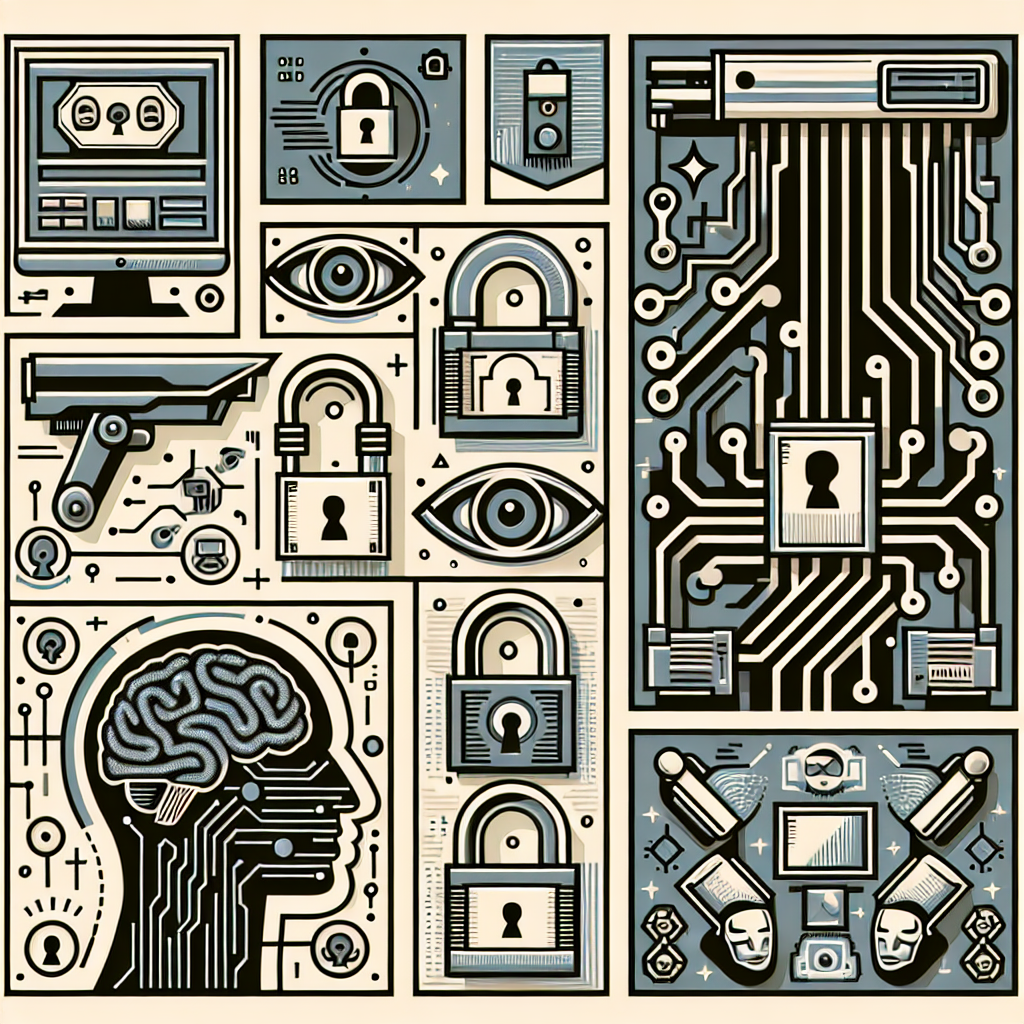Addressing Privacy Concerns in AI-powered Surveillance
In recent years, the use of artificial intelligence (AI) in surveillance systems has become increasingly common. AI-powered surveillance systems have the capability to analyze vast amounts of data in real-time, enabling more efficient monitoring and threat detection. However, with this increased capability comes concerns about privacy and data security. In this article, we will explore some of the key privacy concerns associated with AI-powered surveillance and discuss potential solutions to address these challenges.
Privacy Concerns in AI-powered Surveillance
1. Invasion of Privacy: One of the primary concerns with AI-powered surveillance is the potential for invasion of privacy. Surveillance systems equipped with AI technology have the ability to analyze video footage in great detail, potentially capturing sensitive information about individuals without their knowledge or consent.
2. Data Security: Another major concern is the security of the data collected by AI-powered surveillance systems. If this data falls into the wrong hands, it could be used for malicious purposes, such as identity theft or fraud.
3. Biased Algorithms: AI algorithms used in surveillance systems may be biased, leading to unfair targeting or profiling of certain groups of individuals. This could have serious implications for civil liberties and human rights.
4. Lack of Transparency: AI algorithms are often complex and opaque, making it difficult for individuals to understand how their data is being used and for what purposes. This lack of transparency can erode trust in the surveillance system and lead to concerns about its legitimacy.
Potential Solutions to Address Privacy Concerns
1. Privacy by Design: One way to address privacy concerns in AI-powered surveillance is to adopt a privacy by design approach. This means incorporating privacy and data protection considerations into the design and implementation of the surveillance system from the outset. By embedding privacy principles into the system architecture, developers can ensure that privacy is prioritized throughout the entire lifecycle of the system.
2. Data Minimization: Another key principle for addressing privacy concerns is data minimization. This involves collecting only the data that is necessary for the intended purpose of the surveillance system and limiting the retention period of this data. By minimizing the amount of personal data collected and stored, the risk of privacy breaches can be reduced.
3. Anonymization and Encryption: To protect the privacy of individuals captured in surveillance footage, it is important to anonymize the data wherever possible. This can be achieved by removing personally identifiable information from the data before it is stored or processed. Additionally, encryption techniques can be used to secure the data in transit and at rest, preventing unauthorized access.
4. Algorithmic Fairness: To address concerns about biased algorithms, developers should ensure that AI models used in surveillance systems are fair and unbiased. This can be achieved by carefully monitoring the performance of the algorithms and taking steps to mitigate any biases that are detected. Transparency and accountability are also important considerations, as they allow stakeholders to understand how decisions are being made by the system.
FAQs
Q: How can individuals protect their privacy in the age of AI-powered surveillance?
A: Individuals can protect their privacy by being aware of the surveillance systems in place and understanding their rights regarding data protection. They can also take steps to minimize their digital footprint and use privacy-enhancing technologies, such as VPNs and encrypted messaging apps.
Q: What are the legal implications of AI-powered surveillance?
A: The use of AI-powered surveillance is subject to various legal and regulatory frameworks, including data protection laws, human rights legislation, and privacy regulations. Organizations must ensure compliance with these laws to avoid legal consequences.
Q: How can organizations ensure that their AI-powered surveillance systems are ethically sound?
A: Organizations can ensure that their surveillance systems are ethically sound by conducting ethical impact assessments, engaging with stakeholders, and implementing transparent and accountable decision-making processes. They should also prioritize the protection of individual rights and freedoms in the design and implementation of the system.
In conclusion, addressing privacy concerns in AI-powered surveillance requires a multi-faceted approach that involves incorporating privacy principles into the design of the system, minimizing data collection and retention, anonymizing and encrypting data, ensuring algorithmic fairness, and promoting transparency and accountability. By taking these steps, organizations can mitigate the risks associated with AI-powered surveillance and build trust with stakeholders.

